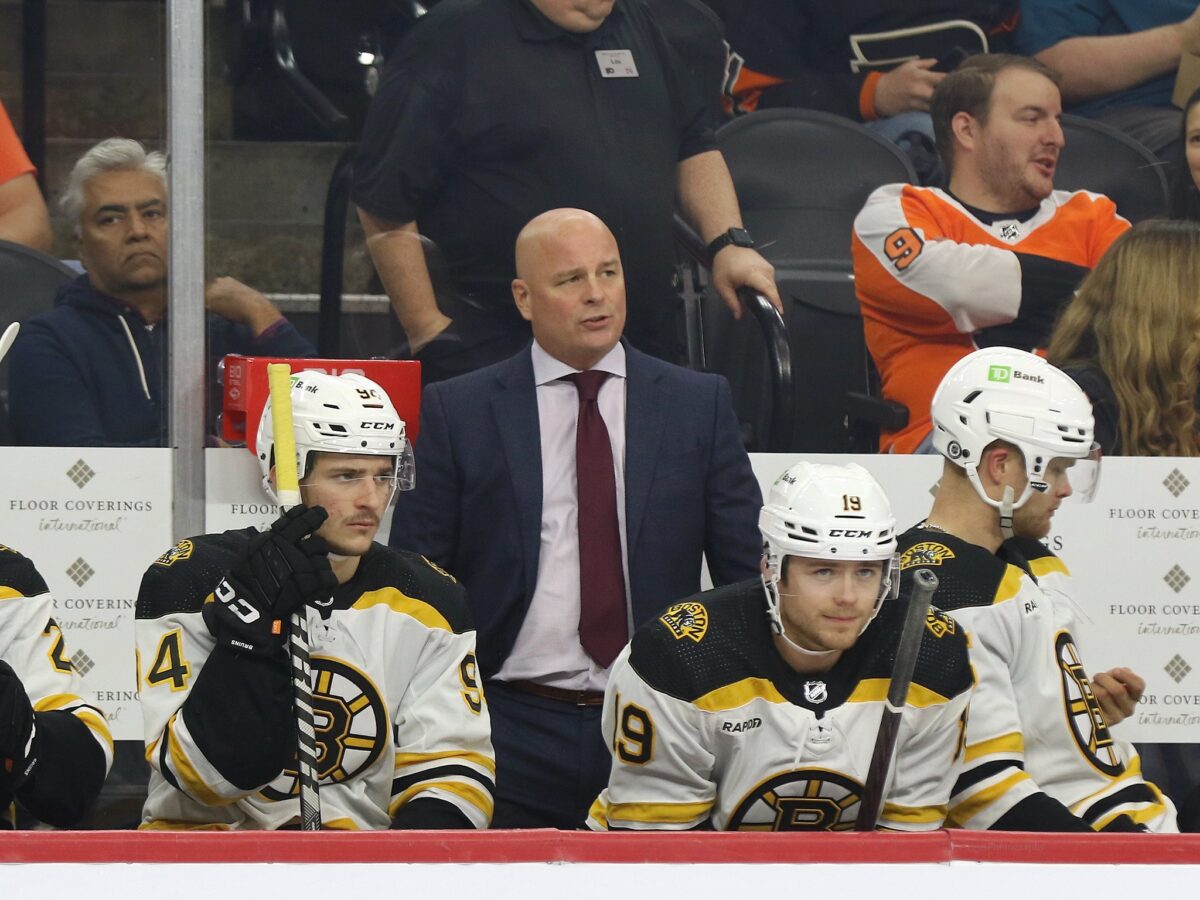For the past couple of seasons, it’s been no secret that the Boston Bruins have been mostly a two-line team. Last season in the second half of the season, their third line played well and was a difference-maker in the regular season, before cooling off in their first-round Stanley Cup Playoff series with the Carolina Hurricanes.
The Bruins entered the 2022 offseason as a cap team which severely hampered general manager (GM) Don Sweeney’s ability to add in free agency. He did make a move on the opening day of free agency by trading Erik Haula to the New Jersey Devils for Pavel Zacha, a player that has been on his radar the last couple of trade deadlines. Sweeney also signed a group of players to contracts, including A.J. Greer, who was expected to be depth in the American Hockey League (AHL) with the Providence Bruins.
Boston is 18 games into the 2022-23 season under first-year coach Jim Montgomery and they currently own a surprising 16-2-0 record. There are a lot of ways that you can go to point the finger as to why they have been the most surprising team in the NHL with all the injuries they have had to endure. The goaltending has stood on its head, and the defense is playing better than people expected, but one thing that is happening that was not expected is the forward depth that is showing up on a nightly basis.
Bruins Depth Provides Montgomery With Mixing & Matching Options
Brad Marchand was not expected to return from offseason double hip surgery until late November, but he returned a month earlier than expected and has been producing at his usual high level. With Marchand back in the fold, Montgomery has plenty of options to mix and match his lines and still get production.

David Pastrnak playing in a contract year leads the team with 12 goals, while Patrice Bergeron (nine goals) and Jake DeBrusk (seven goals) are next, followed by Taylor Hall Marchand, David Krejci and Charlie Coyle with six each. The scoring depth numbers don’t stop there. Nick Foligno has doubled his output from last season with four. Greer, Zacha, and Trent Fredric have three apiece. Tomas Nosek with two and Craig Smith with one round out the scoring in the first 19 games.
What this depth does is it allows Montgomery to move people around the lineup and they still are getting production from not only the top six but also the bottom six. Zacha provides the most flexibility as he spent time in the top-six on the left wing when Marchand was out of the lineup, then he slid into the second-line center spot when Krejci missed three games with an upper-body injury, then went down to the third-line with Coyle and Foligno when he came back.
Against the St. Louis Blues on Nov. 7 in the Bruins’ 3-1 win, Frederic was moved down to the fourth line with Tomas Nosek and Smith and all he did was play one of his best all-around games and gave Boston some insurance with a goal late in the third period. This is after he scored what turned out to be the game-winning goal in a 5-2 win over the New York Rangers on Nov. 3 when he beat Igor Shesterkin with a shot from above the left circle as a member of the third line.
Against the Tampa Bay Lightning on Nov. 21, they had five different goal scorers, Pastrnak, Marchand, Krejci, Foligno, and Coyle, to climb out of an early deficit. All four lines had at least one goal in the 5-3 win.
Bruins Depth Paying Dividends Early in 2022-23
It is easy to point to the Bruins’ goaltending and the strong play of the defense as two reasons why the Black and Gold are off to a blistering start to the season, but the forward depth has allowed them to win games in just every way possible. They are able to win a shootout, a low-scoring game, and even a game in a shootout or overtime. The new system under Montgomery can be credited with the success that former coach Bruce Cassidy was not able to get in the last couple of seasons.

Not many people saw this depth with the forwards at the beginning of the season as there were a lot of questions with players like Foligno, Frederic, Coyle, and more. They have answered all the questions to date, but now the question is how long can they keep it up for? If one player goes into a slump, Montgomery is not afraid to shift people around and still get production from the replacement players in that spot. It’s a good situation for a first-year coach to be in.
